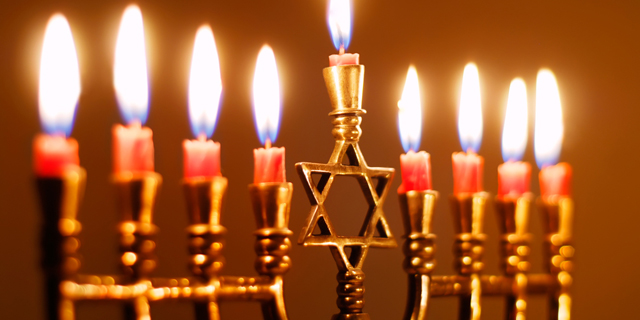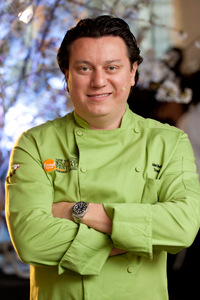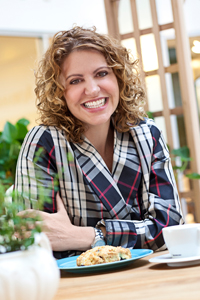Viva Hanukkah! That’s the message when Jewish Latinos across the United States celebrate the eight-day festival of lights. Though it may seem like an unlikely combination, the history of Judaism in Latin America goes back to the very discovery of the New World. During the inquisition, Christians of Jewish ancestry fled Europe and made a home for themselves in Spanish and Portuguese colonies in the Caribbean and South America. Today there are up to half a million Jewish Latinos living in Latin America.
Jewish Latinos are typically known as Sephardic Jews, who trace their roots to Spain, Portugal, the Middle East, and North Africa, compared to Ashkenazi Jews who are from Eastern Europe, France, and Germany. And at this festive time of year, when Christmas and Hanukkah collide, attention turns to the kitchen and the delicious traditions of the holidays.
So, what’s a typical Hanukkah celebration like for Jewish Latinos in the U.S.? Real estate agent Katriel Calderon and his family are Latin Sephardic Jews from Colombia living in New York City. They observe Hanukkah with a traditional dinner with family and friends.
While Calderon and his family “share in Maoz Tzur and reading of Psalms and Tzedakah,” there are some differences, compared to his Ashkenazi friends.
“We make borekas [a type of empanadas] everyday as well as tres leches and arroz con leche and of course a Latin egg nog is a staple,” Calderon said.
They also recite psalms and give “thanks for our ancestors and family who’ve faced persecution in Latin America, making America our diaspora, every night when we light a candle, usually by mentioning one of their names.”
Gifts and often coins are given for the Hanukkah tradition known as gelt, meaning money in Yiddish.
“We have to make a donation of some sort for every gift we get,” says Calderon of his family’s Hanukkah gifting tradition. “Oftentimes if it’s cash, we will use that to buy gifts to send to Colombia.”
The fun continues with, “music, music and more music,” says Calderon. “We have play music the entire time especially onzot Hanukkah,” which is the last night of the celebration.
Next, Eric Greenspan, Julian Medina, and Michelle Bernstein shair their Hanukkah traditions…
[pagebreak]Festival of Light, Fusion-Style
Chef Eric Greenspan, who (with Roberto Trevino) co-owns El Nosh, a Latin Jewish pop-up food truck in Los Angeles, enjoys celebrating Hanukkah “around family, frying latkes.”
He says he tried “experimenting at home” with the recipe but his family shooed him away. “So I save the experiments for El Nosh.” When it comes to crafting traditional Hanukkah menus with Latin flair, Greenspan explains, “the possibilities are endless.”
He continued, “The key is to take a traditional dish from either ethnicity, then try to find a congruent flavor from the other side. It becomes effortless after a while.”
For chef Julian Medina (right), owner of Toloache, Yerba Buena, and Yerba Buena Perry in New York City, Hanukkah is a “great holiday to spend with kids and family.”
“I celebrate the holiday creating a special menu with Hanukkah traditions using Mexican ingredients,” he said. “This year as part of the celebration, I will make a smoked white fish guacamole and my Mexican Sufganiyot [Hanukkah donuts] with dulce de leche.”
The Hanukkah menu at Toloache, includes a Latkes Trio, which features potato jalapeño with horseradish crema, zucchini with tomatillo apple salsa, and Mexican cheeses with chipotle and agave nectar; brisket tacos, with Bohemia-braised brisket and tomatillo salsa; and costillas con kumquat, braised beef short ribs with kumquat-habanero jus and boniato-hoserasdish puree. Guests can toast the festival of light with a Hanukkah margarita, made with Don Diego Blanco Kosher Tequila, kumquats, honey, black pepper, and lime.
Blending Traditions
As a Jewish Latina, chef Michelle Bernstein (left) knows how to blend the cultures.
For her, Hanukkah is primarily a celebration of Jewish traditions. “Of course we celebrate the fact that we are also Latin, but on holy days, the tradition of Judaism really comes through,” she said. “You can feel our Latin roots in the flavor of our foods more than anything.”
Bernstein makes potato pancakes as a side dish and zeppole pastries for dessert. Both are cooked in oil, as are many Hanukkah foods, since oil reminds the Jewish people about the origins of the festival, a time when one night’s oil supply lasted eight nights.
“Sephardic Jews from Spain eat the same but also include kefte and other delicious fried meat dishes as well as fried artichokes,” says Bernstein.
Want to try Bernstein’s Hannukah at home? Check out her recipe for sweet fried zeppole.
- 1/4 cup butter
- 1/4 cup granulated sugar
- 1 cup plus 1 tablespoon all-purpose flour
- 4 eggs
- sugar and cinnaon for dusting





![Making Mealtime Matter with La Familia: Easy Sofrito [Video]](https://thelatinkitchen.com/wp-content/uploads/2015/10/sofrito-shutterstock__0-500x383.jpg)
![Easy Latin Smoothies: Goji Berry Smoothie [Video]](https://thelatinkitchen.com/wp-content/uploads/2015/12/goji_berry-shutterstock_-500x383.jpg)
















![Fun and Fast Recipes: Fiesta Cabbage Salad [Video]](https://thelatinkitchen.com/wp-content/uploads/2015/11/fiesta_cabbage_slaw-shutterstock_-500x383.jpg)









